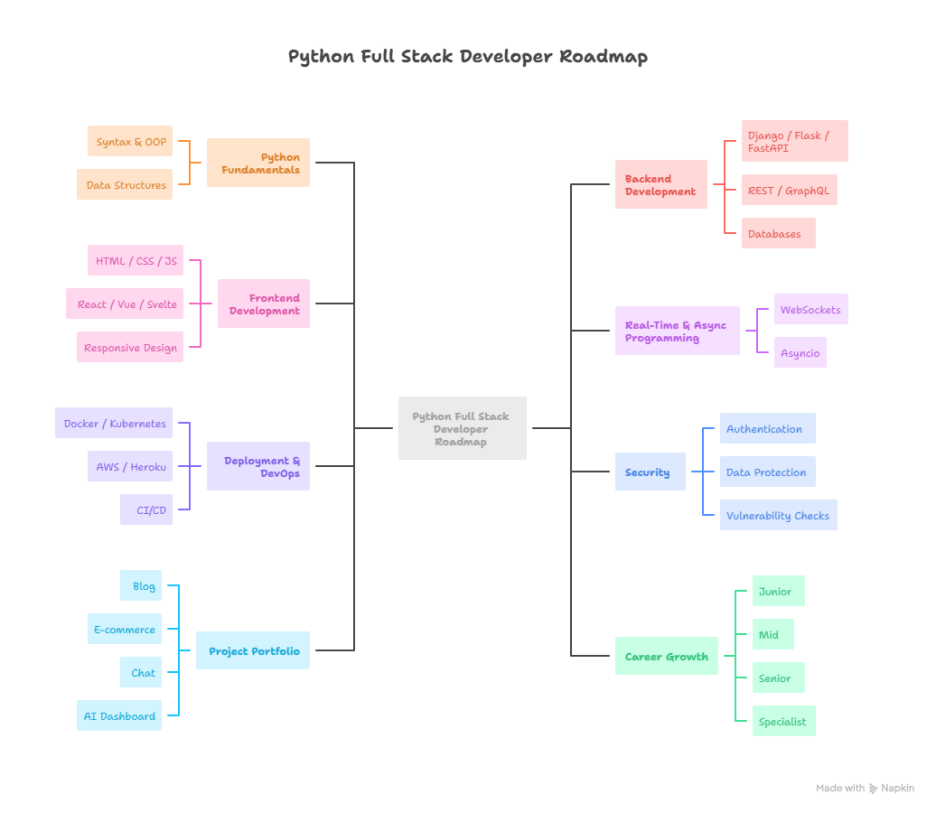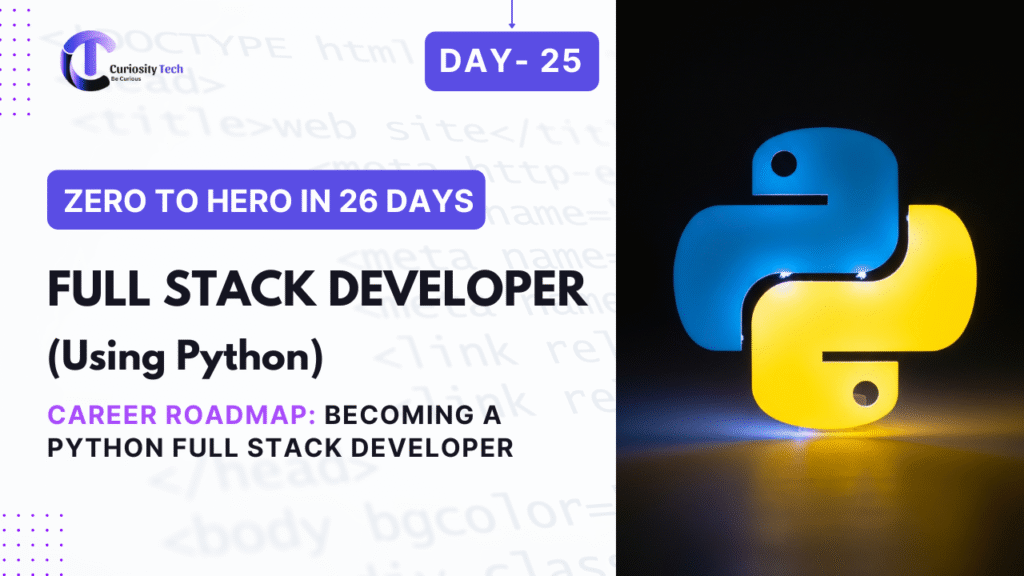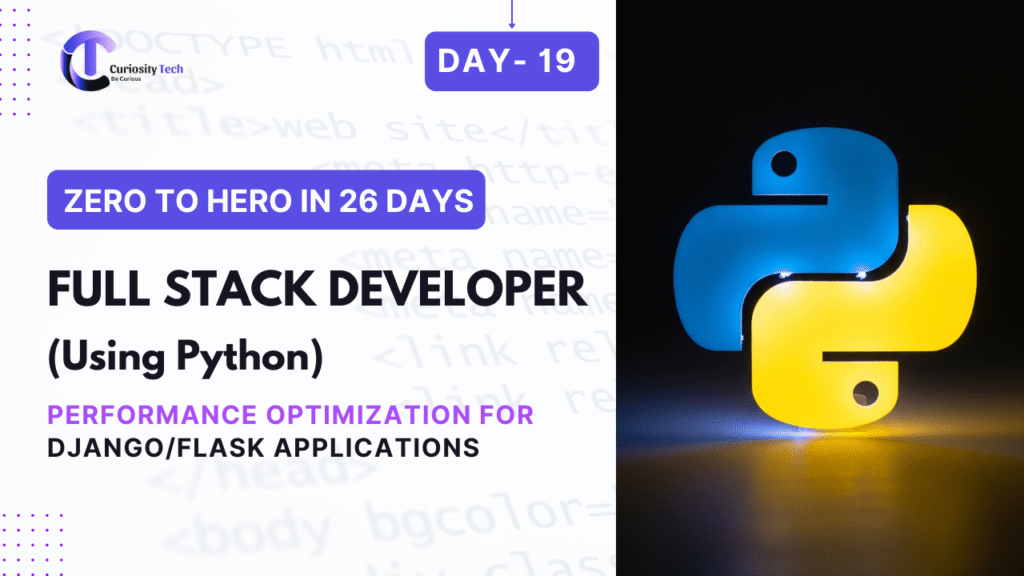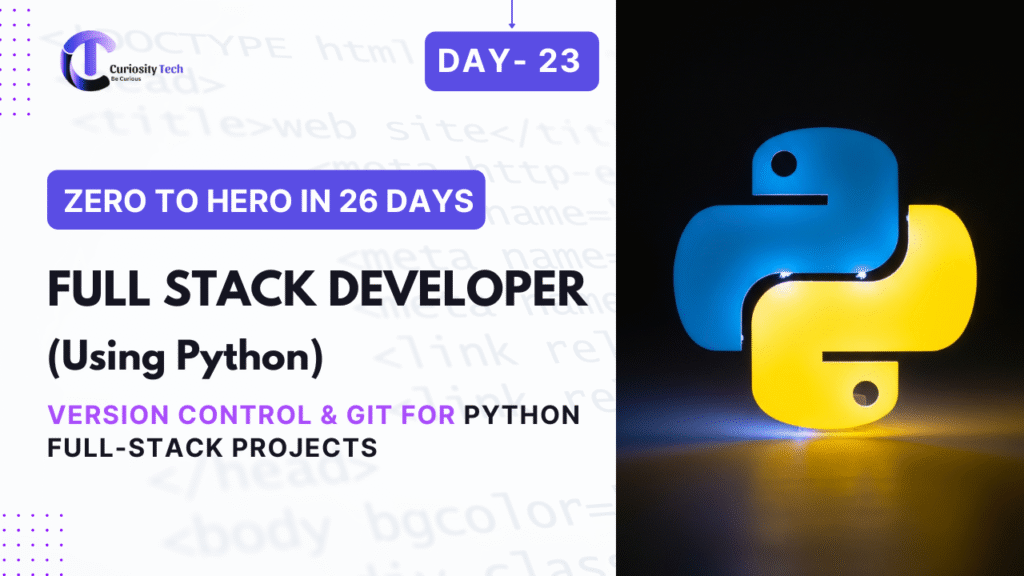Introduction
Becoming a Python Full Stack Developer requires mastering both frontend and backend technologies, understanding databases, deployment, and modern workflows, and staying updated with industry trends. A structured roadmap helps learners focus, avoid overwhelm, and build job-ready skills.
At CuriosityTech, we emphasize that a Full Stack developer is not just a coder—they are problem solvers, architects, and innovators capable of delivering end-to-end solutions.
Step 1: Foundations of Python
| Skill | Description | Recommended Resources |
| Python Syntax & Basics | Variables, loops, functions, OOP | Official Python Docs, CuriosityTech tutorials |
| Data Structures & Algorithms | Lists, dictionaries, stacks, queues | LeetCode, HackerRank |
| File Handling & Exceptions | Reading/writing files, exception handling | Python Docs |
�� Insight: Strong Python fundamentals form the backbone for backend logic, data manipulation, and API creation.
Step 2: Backend Development
| Technology / Framework | Description | Learning Focus |
| Django | Full-featured Python web framework | ORM, Templates, Authentication, REST APIs |
| Flask | Lightweight microframework | Routing, Middleware, Flask-RESTful |
| FastAPI | Async-first modern Python framework | Async endpoints, type hints, performance |
| Database Management | SQL & NoSQL databases | PostgreSQL, MySQL, MongoDB, Redis |
Practice by building CRUD applications, blogs, e-commerce apps.- Learn to integrate REST and GraphQL APIs.
Step 3: Frontend Development
| Technology / Skill | Description |
| HTML, CSS, JavaScript | Core web technologies |
| React / Vue / Svelte | Modern frontend frameworks |
| Responsive Design | Mobile-first layouts, media queries |
| AJAX / Fetch / Axios | API consumption and dynamic data rendering |
�� Tip: Python Full Stack developers must bridge backend APIs and dynamic frontend interfaces.
Step 4: Real-Time & Async Programming
- Learn WebSockets, async/await in Python, and event-driven design.
- Build chat apps, notifications, or dashboards to practice.
- Tools: Django Channels, Flask-SocketIO, FastAPI async endpoints
Step 5: Deployment & DevOps
| Area | Skills / Tools |
| Cloud Hosting | AWS, Heroku, DigitalOcean |
| Containerization | Docker, Kubernetes |
| CI/CD Pipelines | GitHub Actions, GitLab CI |
| Monitoring | Sentry, New Relic |
Deploy Python Full Stack projects, integrate automatic tests, and ensure scalability.
Step 6: Security & Best Practices
- Authentication & Authorization: JWT, OAuth2, session management
- Input Validation & Sanitization: XSS, CSRF prevention
- Secure Storage: Password hashing, encryption for sensitive data
- Dependency Management: Regular updates, vulnerability checks
�� Security is non-negotiable for production-ready applications.
Step 7: Project Portfolio
| Project Type | Learning Outcome |
| Blog Application | CRUD, templates, API integration |
| E-commerce Platform | Authentication, payments, complex relationships |
| Real-Time Chat App | WebSockets, async programming |
| AI-Powered Dashboard | ML model integration, API consumption |
| Portfolio Website | Deployable project, CI/CD, frontend-backend integration |
A strong project portfolio demonstrates practical skills to employers.
Step 8: Career Progression
| Stage | Focus |
| Junior Full Stack Developer | Learn fundamentals, build small projects |
| Mid-Level Full Stack Developer | Work on larger projects, optimize performance |
| Senior / Lead Developer | Architect systems, mentor juniors, handle DevOps |
| Specialized Roles | AI integration, Cloud Architect, Security Specialist |
�� At curiositytech.in, learners follow a structured roadmap, gradually building technical depth and professional maturity.
Infographic Idea – Python Full Stack Roadmap

- Shows step-by-step roadmap from basics to advanced career stages.
Real-World CuriosityTech Example
- Learners completed a Python Full Stack training path:
- Started with Python basics → Django/Flask APIs → React frontend
- Built portfolio projects including blogs, e-commerce, and chat apps
- Learned deployment, CI/CD, security, and real-time programming
- Outcome: Students were job-ready, confident in Python Full Stack interviews and projects.
Best Practices
- Master Python fundamentals first.
- Build small projects and gradually increase complexity.
- Learn frontend-backend integration early.
- Understand deployment and DevOps workflows.
- Focus on security and performance in every project.
- Maintain a professional portfolio and GitHub repository.
- Stay updated with trends, tools, and frameworks.
Conclusion
A Python Full Stack career requires a blend of technical expertise, project experience, and professional workflow knowledge. Following a structured roadmap ensures growth from beginner to expert, and positions developers to work on complex, production-ready applications.
At http://curiositytech.in, learners follow a hands-on roadmap, completing real-world projects, mastering Python Full Stack frameworks, and preparing for high-demand roles in 2025 and beyond.



